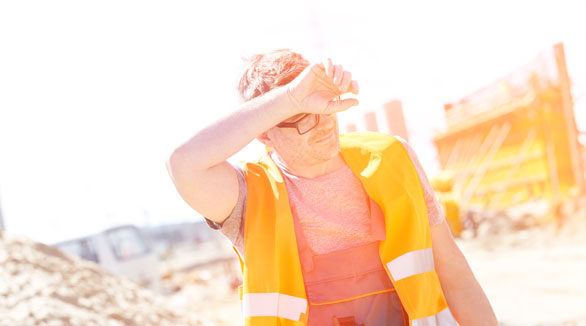Working outdoors in regions with warm climates means hot summer months pose special hazards. It’s imperative to acknowledge the potential hazards that can come with working outdoors in the heat and sun and to take measures to proactively protect yourselves.
Heat – The combination of heat and humidity can be a serious health threat during the summer months. If you work outside you may be at increased risk for heat related illness. So, take precautions. Here’s how:
- Drink small amounts of water frequently.
- Take frequent short breaks in cool shade.
- Eat smaller meals before work activity.
- Avoid caffeine and large amounts of sugar.
- Work in the shade when possible.
- Find out from your health care provider if your medications and heat don’t mix.
- Know that equipment such as respirators or work suits can increase heat stress.
There are three kinds of major heat-related disorders—heat cramps, heat exhaustion and heat stroke. You need to know how to recognize each one and what first aid treatment is necessary.
Sun – Sunlight contains ultraviolet (UV) radiation, which causes premature aging of the skin, wrinkles, cataracts, and skin cancer. There are no safe UV rays or safe suntans. Be especially careful in the sun if:
- you burn easily,
- spend a lot of time outdoors, or
- have any of the following physical features:
- numerous, irregular, or large moles;
- freckles;
- fair skin; or
- blond, red, or light brown hair.
Here’s how to block those harmful rays:
- Cover up. Wear loose-fitting, long-sleeved shirts and long pants.
- Use sunscreen with a sun protection factor (SPF) of at least 30. Be sure to follow application directions on the bottle or tube.
- Wear a hat. A wide brim hat, not a baseball cap, works best because it protects the neck, ears, eyes, forehead, nose, and scalp.
- Wear UV-absorbent sunglasses (eye protection). Sunglasses don’t have to be expensive, but they should block 99 to 100 percent of UVA and UVB radiation.
- Before you buy sunglasses, read the product tag or label. Limit exposure. UV rays are most intense between 10 a.m. and 4 p.m.

